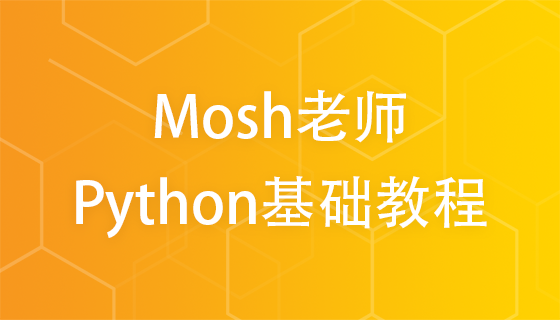
Vue3的工具函数对比于Vue2的工具函数变化还是很大的,个人感觉主要还是体现在语法上,已经全面拥抱es6了;【相关推荐:vuejs视频教程、web前端开发】
对比于工具类的功能变化并没有多少,大多数基本上都是一样的,只是语法上和实现上有略微的区别;
源码地址:
之前介绍了很多阅读方式,这次就直接跳过了,直接开始阅读源码;
立即学习“前端免费学习笔记(深入)”;
makeMap: 生成一个类似于Set的对象,用于判断是否存在某个值EMPTY_OBJ: 空对象EMPTY_ARR: 空数组NOOP: 空函数NO: 返回false的函数isOn: 判断是否是on开头的事件isModelListener: 判断onUpdate开头的字符串extend: 合并对象remove: 移除数组中的某个值hasOwn: 判断对象是否有某个属性isArray: 判断是否是数组isMap: 判断是否是Map
isSet: 判断是否是Set
isDate: 判断是否是Date
isRegExp: 判断是否是RegExp
isFunction: 判断是否是函数isString: 判断是否是字符串isSymbol: 判断是否是Symbol
isObject: 判断是否是对象isPromise: 判断是否是Promise
objectToString: Object.prototype.toString
toTypeString: Object.prototype.toString的简写toRawType: 获取对象的类型isPlainObject: 判断是否是普通对象isIntegerKey: 判断是否是整数key
isReservedProp: 判断是否是保留属性isBuiltInDirective: 判断是否是内置指令camelize: 将字符串转换为驼峰hyphenate: 将字符串转换为连字符capitalize: 将字符串首字母大写toHandlerKey: 将字符串转换为事件处理的key
hasChanged: 判断两个值是否相等invokeArrayFns: 调用数组中的函数def: 定义对象的属性looseToNumber: 将字符串转换为数字toNumber: 将字符串转换为数字getGlobalThis: 获取全局对象genPropsAccessExp: 生成props的访问表达式这其中有大部分和Vue2的工具函数是一样的,还有数据类型的判断,使用的是同一种方式,因为有了之前Vue2的阅读经验,所以这次快速阅读;
如果想要详细的可以看我之前写的文章:【源码共读】Vue2源码 shared 模块中的36个实用工具函数分析;
而且这次是直接源码,ts版本的,不再处理成js,所以直接阅读ts源码;
export function makeMap(
str: string,
expectsLowerCase?: boolean
): (key: string) => boolean {
const map: Record<string, boolean> = Object.create(null)
const list: Array<string> = str.split(',')
for (let i = 0; i < list.length; i++) {
map[list[i]] = true
}
return expectsLowerCase ? val => !!map[val.toLowerCase()] : val => !!map[val]
}makeMap的源码在同级目录下的makeMap.ts文件中,引入进来之后直接使用export关键字导出,实现方式和Vue2的实现方式相同;
export const EMPTY_OBJ: { readonly [key: string]: any } = __DEV__
? Object.freeze({})
: {}
export const EMPTY_ARR = __DEV__ ? Object.freeze([]) : []EMPTY_OBJ和EMPTY_ARR的实现方式和Vue2的emptyObject相同,都是使用Object.freeze冻结对象,防止对象被修改;
export const NOOP = () => {}和Vue2的noop实现方式相同,都是一个空函数,移除了入参;
/** * Always return false. */ export const NO = () => false
和Vue2的no实现方式相同,都是一个返回false的函数,移除了入参;
const onRE = /^on[^a-z]/ export const isOn = (key: string) => onRE.test(key)
判断是否是on开头的事件,并且on后面的第一个字符不是小写字母;
export const isModelListener = (key: string) => key.startsWith('onUpdate:')判断是否是onUpdate:开头的字符串;
参考:startWith
export const extend = Object.assign
直接拥抱es6的Object.assign,Vue2的实现方式是使用for in循环;
export const remove = <T>(arr: T[], el: T) => {
const i = arr.indexOf(el)
if (i > -1) {
arr.splice(i, 1)
}
}对比于Vue2删除了一些代码,之前的快速删除最后一个元素的判断不见了;
猜测可能是因为有bug,因为大家都知道Vue2的数组响应式必须使用Array的api,那样操作可能会导致数组响应式失效;
const hasOwnProperty = Object.prototype.hasOwnProperty export const hasOwn = ( val: object, key: string | symbol ): key is keyof typeof val => hasOwnProperty.call(val, key)
使用的是Object.prototype.hasOwnProperty,和Vue2相同;
export const isArray = Array.isArray
使用的是Array.isArray,和Vue2相同;
export const isMap = (val: unknown): val is Map<any, any> => toTypeString(val) === '[object Map]' export const isSet = (val: unknown): val is Set<any> => toTypeString(val) === '[object Set]' export const isDate = (val: unknown): val is Date => toTypeString(val) === '[object Date]' export const isRegExp = (val: unknown): val is RegExp => toTypeString(val) === '[object RegExp]'
都是使用Object.toString来判断类型,对比于Vue2新增了isMap和isSet和isDate,实现方式没变;
export const isFunction = (val: unknown): val is Function => typeof val === 'function' export const isString = (val: unknown): val is string => typeof val === 'string' export const isSymbol = (val: unknown): val is symbol => typeof val === 'symbol' export const isObject = (val: unknown): val is Record<any, any> => val !== null && typeof val === 'object'
和Vue2的实现方式相同,都是使用typeof来判断类型,新增了isSymbol;
export const isPromise = <T = any>(val: unknown): val is Promise<T> => {
return isObject(val) && isFunction(val.then) && isFunction(val.catch)
}和Vue2对比修改了实现方式,但是判断逻辑没变;
export const objectToString = Object.prototype.toString
直接是Object.prototype.toString;
export const toTypeString = (value: unknown): string => objectToString.call(value)
对入参执行Object.prototype.toString;
export const toRawType = (value: unknown): string => {
// extract "RawType" from strings like "[object RawType]"
return toTypeString(value).slice(8, -1)
}和Vue2的实现方式相同;
export const isPlainObject = (val: unknown): val is object => toTypeString(val) === '[object Object]'
和Vue2的实现方式相同;
export const isIntegerKey = (key: unknown) => isString(key) && key !== 'NaN' && key[0] !== '-' && '' + parseInt(key, 10) === key
判断一个字符串是不是由一个整数组成的;
export const isReservedProp = /*#__PURE__*/ makeMap(
// the leading comma is intentional so empty string "" is also included
',key,ref,ref_for,ref_key,' +
'onVnodeBeforeMount,onVnodeMounted,' +
'onVnodeBeforeUpdate,onVnodeUpdated,' +
'onVnodeBeforeUnmount,onVnodeUnmounted'
)使用makeMap生成一个对象,用于判断入参是否是内部保留的属性;
export const isBuiltInDirective = /*#__PURE__*/ makeMap( 'bind,cloak,else-if,else,for,html,if,model,on,once,pre,show,slot,text,memo' )
使用makeMap生成一个对象,用于判断入参是否是内置的指令;
const cacheStringFunction = <T extends (str: string) => string>(fn: T): T => {
const cache: Record<string, string> = Object.create(null)
return ((str: string) => {
const hit = cache[str]
return hit || (cache[str] = fn(str))
}) as T
}同Vue2的cached相同,用于缓存字符串;
const camelizeRE = /-(\w)/g
/**
* @private
*/
export const camelize = cacheStringFunction((str: string): string => {
return str.replace(camelizeRE, (_, c) => (c ? c.toUpperCase() : ''))
})将-连接的字符串转换为驼峰式,同Vue2的camelize相同;
const hyphenateRE = /\B([A-Z])/g /** * @private */ export const hyphenate = cacheStringFunction((str: string) => str.replace(hyphenateRE, '-$1').toLowerCase() )
将驼峰式字符串转换为-连接的字符串,同Vue2的hyphenate相同;
/** * @private */ export const capitalize = cacheStringFunction( (str: string) => str.charAt(0).toUpperCase() + str.slice(1) )
将字符串首字母大写,同Vue2的capitalize相同;
/**
* @private
*/
export const toHandlerKey = cacheStringFunction((str: string) =>
str ? `on${capitalize(str)}` : ``
)将字符串首字母大写并在前面加上on;
// compare whether a value has changed, accounting for NaN. export const hasChanged = (value: any, oldValue: any): boolean => !Object.is(value, oldValue)
和Vue2相比,移除了polyfill,直接使用Object.is;
export const invokeArrayFns = (fns: Function[], arg?: any) => {
for (let i = 0; i < fns.length; i++) {
fns[i](arg)
}
}批量调用传递过来的函数列表,如果有参数,会将参数传递给每个函数;
export const def = (obj: object, key: string | symbol, value: any) => {
Object.defineProperty(obj, key, {
configurable: true,
enumerable: false,
value
})
}使用Object.defineProperty定义一个属性,并使这个属性不可枚举;
/**
* "123-foo" will be parsed to 123
* This is used for the .number modifier in v-model
*/
export const looseToNumber = (val: any): any => {
const n = parseFloat(val)
return isNaN(n) ? val : n
}将字符串转换为数字,如果转换失败,返回原字符串;
通过注释知道主要用于v-model的.number修饰符;
/**
* Only conerces number-like strings
* "123-foo" will be returned as-is
*/
export const toNumber = (val: any): any => {
const n = isString(val) ? Number(val) : NaN
return isNaN(n) ? val : n
}将字符串转换为数字,如果转换失败,返回原数据;
let _globalThis: any
export const getGlobalThis = (): any => {
return (
_globalThis ||
(_globalThis =
typeof globalThis !== 'undefined'
? globalThis
: typeof self !== 'undefined'
? self
: typeof window !== 'undefined'
? window
: typeof global !== 'undefined'
? global
: {})
)
}获取全局对象,根据环境不同返回的对象也不同;
const identRE = /^[_$a-zA-Z\xA0-\uFFFF][_$a-zA-Z0-9\xA0-\uFFFF]*$/
export function genPropsAccessExp(name: string) {
return identRE.test(name)
? `__props.${name}`
: `__props[${JSON.stringify(name)}]`
}生成props的访问表达式,如果name是合法的标识符,直接返回__props.name,否则返回通过JSON.stringify转换后的__props[name];
通过这次的源码阅读,我们巩固了一些基础知识,通过对比Vue2的工具函数,我们也了解了Vue3的一些变化;
这些变化个人感觉主要集中在拥抱es6,可以看到放弃ie是多么自由而奔放;
话外题,不知道大家有没有发现MDN上面的浏览器兼容性表格,已经没有了ie的相关信息。
以上就是聊聊Vue3 shared模块下38个工具函数(源码阅读)的详细内容,更多请关注php中文网其它相关文章!

每个人都需要一台速度更快、更稳定的 PC。随着时间的推移,垃圾文件、旧注册表数据和不必要的后台进程会占用资源并降低性能。幸运的是,许多工具可以让 Windows 保持平稳运行。




Copyright 2014-2025 https://www.php.cn/ All Rights Reserved | php.cn | 湘ICP备2023035733号